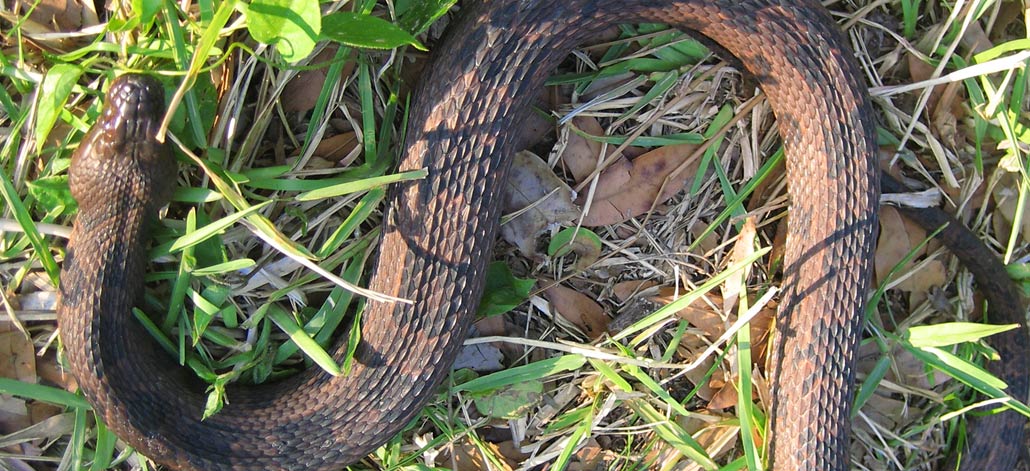- USA Wildlife Removal Education Guide - Northern Water Snakes: Versatile Predators
Northern Water Snakes: Versatile Predators

The snakes’ range extends across eastern and central North America, reaching as far as southern Ontario and Quebec and south into Texas and Florida, favoring aquatic habitats such as lakes, ponds, marshes, rivers and stream.
Their body coloration includes brown, gray, reddish and brownish-black, with crossbands on their necks and dark stripes and blotches on the rest of their bodies. They are among the largest snakes in North America, with a relatively heavy body and known lengths of up to five feet. Typically, the females are significantly larger than the males.
Northern Water Snakes bear live young after mating in spring/early summer. The female carries the fertilized eggs insider her body where they hatch prior to birth. Normally, litters are born between August and October, and comprise an average of eight live young, each 7.5-9 inches long. (Litters of 20 are common and the snakes have been known to bear as many as 40.)
The babies are on their own immediately upon birth. The young snakes grow quickly, doubling in size within their first two years. As they continue to grow, the snakes become darker in color with males reaching sexual maturity at about three years of age, the females at four. In captivity, the snakes have been known to live as long as 10 years.
Water snakes are active both day and night, hunting in shallow waters, lying still with their mouths open. When prey approaches to within a few inches, the snakes surge forward and snap their jaws shut. Their normal diet consists of small fish, amphibians, invertebrates such as leeches and crayfish, and on land, pet species such as mice. They also move around on the bottom, probing for prey in rock crevices and other place where prey might be hidden.
Despite the advantage of its relatively large size the Northern Water Snake does have predators, including foxes, opossums, raccoons, and snapping turtles. Necessarily wary, the snake heads for the water if it sights one of these predators while basking. The snakes are also adept climbers, often napping on an overhanging tree branch and dropping to safety if a predator approaches or if in some other way it is startled out of its repose.
If you need help, we service the entire USA! Click here for a wildlife removal specialist in your town!
Go back to the main Snake Removal page for more information about Northern Water Snakes: Versatile Predators.

